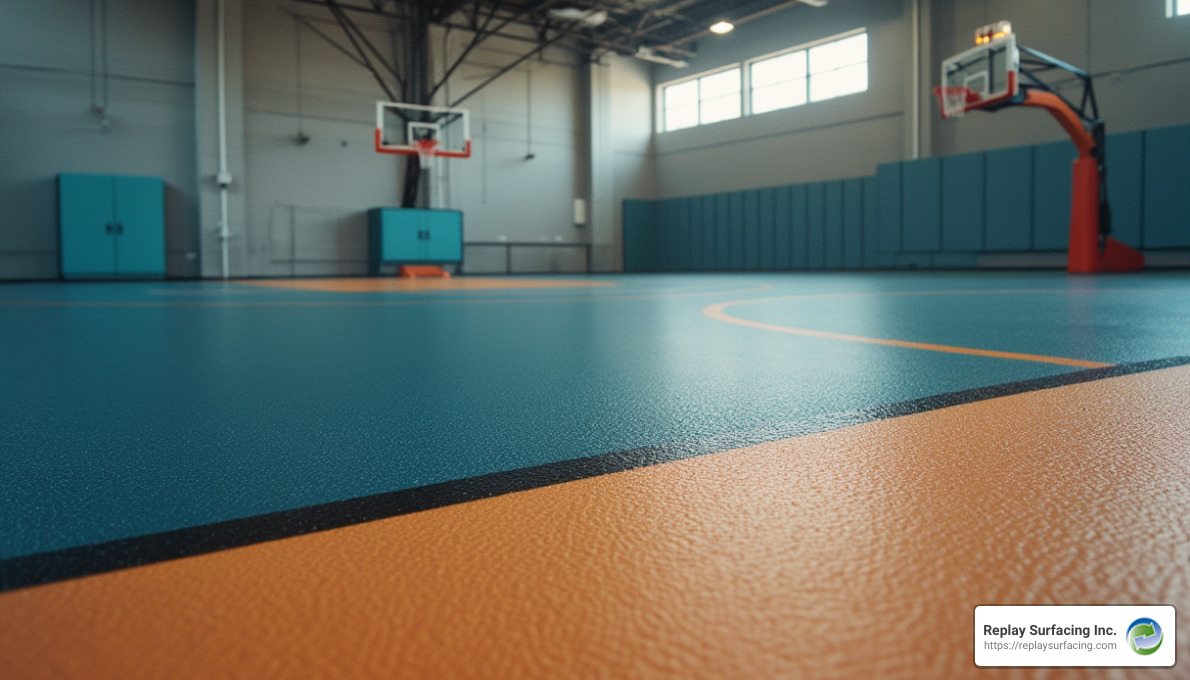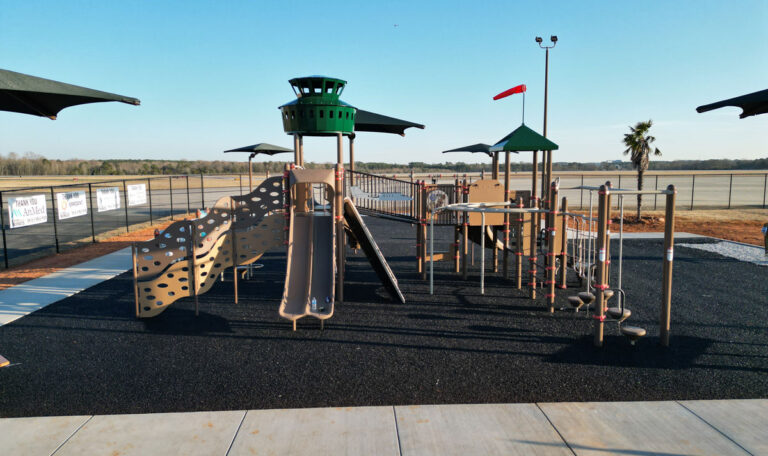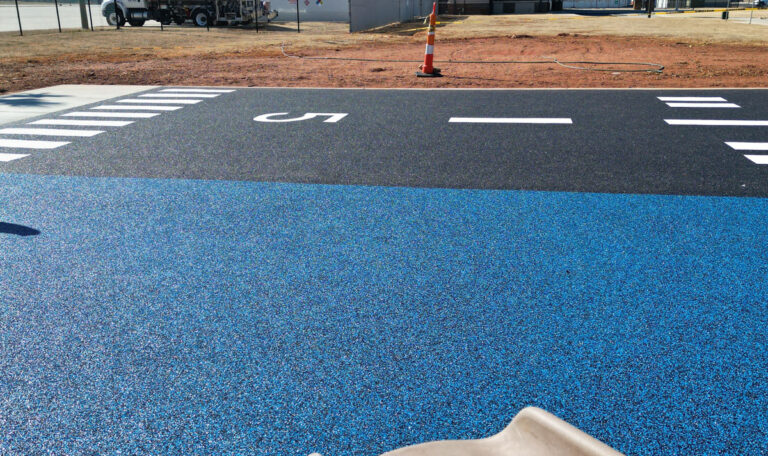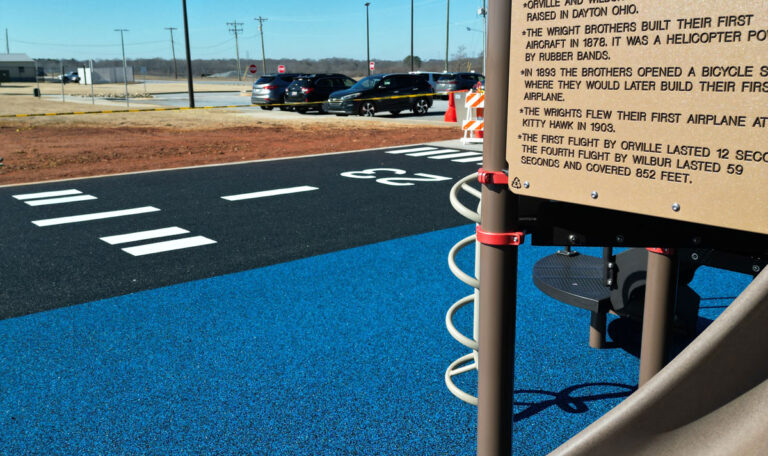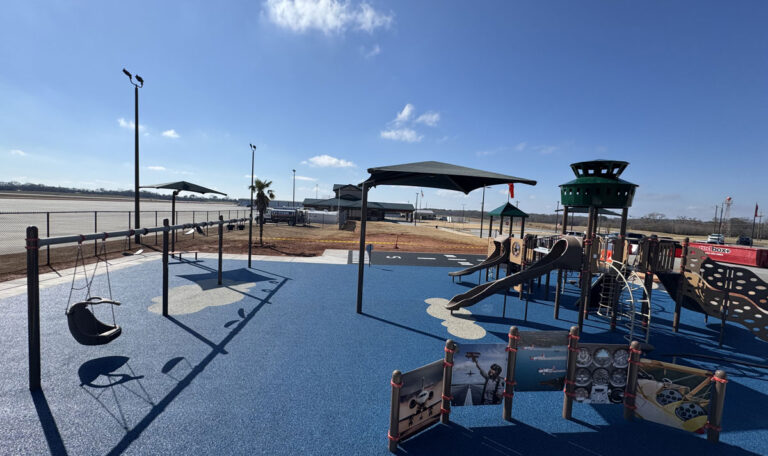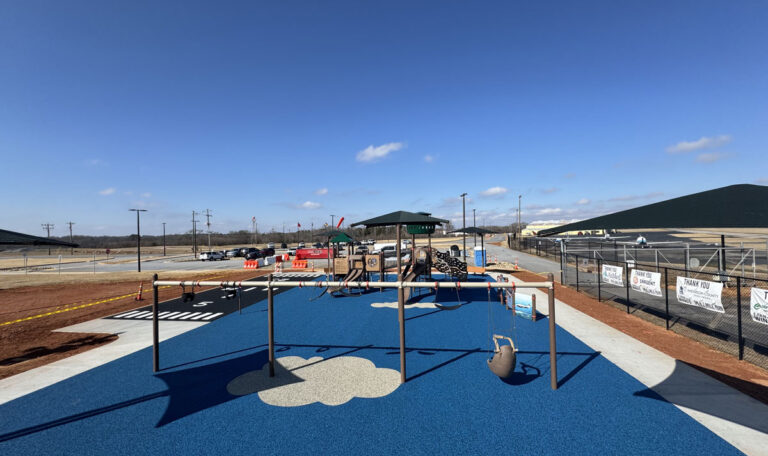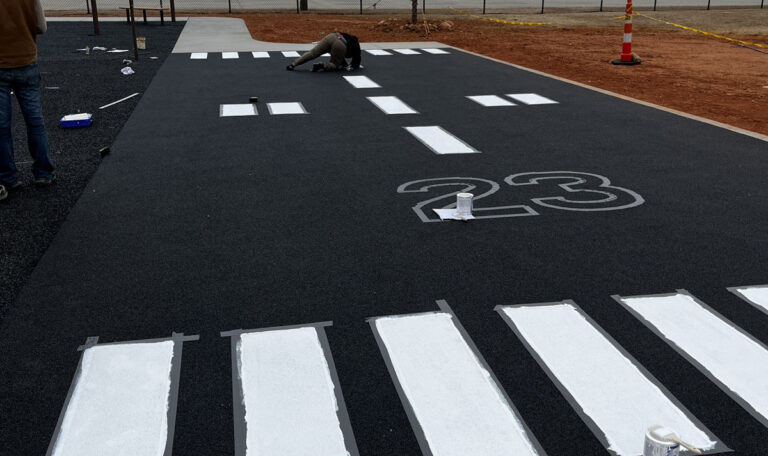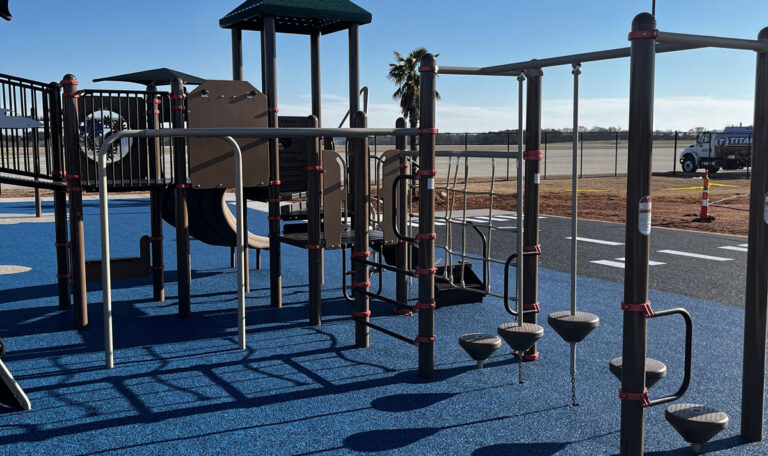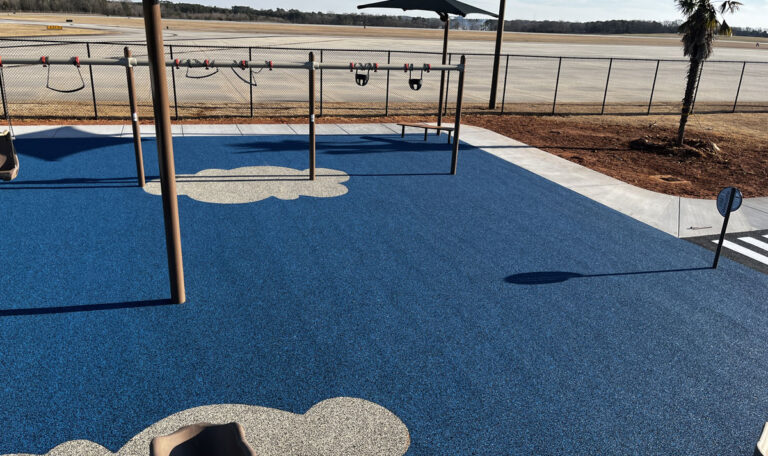When searching for basketball court rubber flooring, understanding its benefits and challenges is key:
- Pros: Offers cushioned support, can improve player safety, and is eco-friendly when made from recycled materials.
- Cons: Can have traction issues and may lead to increased shoe wear.
Navigating basketball court rubber flooring opens doors to innovative and sustainable solutions ideal for modern sports facilities. While traditional materials like wood have long dominated the court space, the sustainable practice of recycling and reusing materials is making rubber a viable contender, especially for eco-conscious managers searching for durable, low-maintenance options. Despite its strengths, this type of flooring can pose unique challenges, such as potential traction issues and increased wear on shoes, which require careful consideration when planning a court’s surface.
My name is Landon Olson, and as a dedicated professional at Replay Surfacing, I’ve spent years changing used tires into innovative rubber flooring options, providing sustainable, versatile solutions for sports facilities. This journey allows me to explore how recycled rubber surfaces can meet both environmental goals and performance needs. Now let’s dive deeper into understanding these flooring options.

Understanding Rubber Flooring for Basketball Courts
When considering basketball court rubber flooring, weigh both its benefits and challenges to ensure it meets the needs of players and facilities alike.
Benefits of Rubber Flooring
Performance and Cushioning
Rubber flooring excels in providing a cushioned surface that reduces the impact on players’ joints. This cushioning effect is crucial for athletes who perform high-impact activities like jumping and running. The softer surface helps in absorbing shocks, which can be particularly beneficial in preventing injuries over time.
Durability
Rubber flooring is known for its long-lasting nature. Unlike traditional wood surfaces, rubber is resistant to wear and tear, making it a cost-effective option for facilities looking to minimize maintenance and replacement costs. Additionally, rubber’s resistance to moisture and spills makes it easy to clean and maintain.
Impact Reduction and Joint Protection
The impact reduction properties of rubber flooring are a significant advantage. By lessening the force exerted on players’ bodies, rubber surfaces can help protect joints and ligaments from strain and injury. This is especially important for athletes who engage in repetitive motions, which can otherwise lead to chronic issues.

Challenges of Rubber Flooring
Traction Issues
One of the main challenges with rubber flooring is finding the right balance of traction. Too much grip can hinder players’ movements, while too little can lead to slips and falls. Ensuring the floor surface interacts well with athletic shoes is crucial to maintaining player safety and performance.
Shoe Wear
Rubber surfaces can be abrasive on standard basketball shoes, leading to faster wear and tear. This increased shoe wear can result in higher costs for athletes and teams, as shoes may need to be replaced more frequently.
Injury Risks
While rubber flooring offers many protective benefits, the wrong type or installation can lead to injury risks. For example, if the surface is too hard due to insufficient cushioning, players may experience issues like “jumper’s knee,” which affects the patella tendon.
Maintenance
Although rubber flooring is generally low maintenance, it still requires regular cleaning and inspection to ensure it remains safe and effective. Facilities must be diligent in maintaining the flooring to prevent buildup of dirt and debris, which can affect traction and performance.
Understanding these benefits and challenges is crucial for anyone considering basketball court rubber flooring. With the right approach, rubber can be a sustainable and effective choice for modern sports facilities.
Comparing Rubber Flooring with Other Materials
When it comes to choosing the right flooring for basketball courts, the options usually include rubber, maple hardwood, vinyl, and concrete. Each material has its own set of advantages and challenges, especially when considering factors like surface friction, athlete preference, cost, installation, and maintenance.
Rubber vs. Hardwood
Maple Hardwood is the traditional choice for indoor basketball courts, particularly in professional and collegiate settings. It offers the right blend of traction, bounce, and flexibility. However, its surface friction can vary depending on the finish, sometimes requiring regular maintenance to keep it in optimal condition.
- Athlete Preference: Many athletes prefer the feel and performance of hardwood due to its natural give and consistent traction, which is ideal for basketball play.
- Cost and Maintenance: Hardwood can be expensive to install and maintain. It requires regular sanding and refinishing to keep the surface smooth and safe for play.
In contrast, basketball court rubber flooring provides excellent cushioning, which helps in reducing the impact on players’ joints. However, it can sometimes offer too much friction, which may hinder quick movements and increase shoe wear.
Rubber vs. Vinyl
Vinyl Flooring is another popular choice for basketball courts, especially in multi-purpose facilities. It is known for its versatility and ease of installation.
- Cost: Vinyl is usually more affordable than hardwood, making it an attractive option for budget-conscious facilities.
- Installation and Maintenance: Vinyl is relatively easy to install and maintain. It can be cleaned with simple sweeping and occasional mopping, unlike hardwood which requires more intensive care.
However, rubber flooring is more durable than vinyl, especially in high-traffic areas. It stands up better to wear and tear, making it a longer-lasting option for busy courts.
Rubber vs. Concrete
Concrete is often used for outdoor basketball courts because of its durability and low maintenance needs. However, it provides little cushioning, which can be hard on players’ joints over time.
- Durability: While concrete is extremely durable, it lacks the shock-absorbing qualities of rubber, potentially leading to more injuries.
- Environmental Impact: Rubber flooring can be more environmentally friendly, especially when made from recycled materials, as highlighted by Replay Surfacing Inc.’s commitment to sustainability.
In summary, while basketball court rubber flooring offers significant benefits in terms of cushioning and durability, it also presents challenges like traction issues and shoe wear. Comparing these materials helps facilities make informed decisions based on their specific needs and budgets.
Innovative Rubber Flooring Solutions
Enhancing Athletic Performance
When it comes to basketball court surfaces, DynaFlex® stands out as a game-changer. Its unique urethane blend ensures a seamless surface that not only looks good but also performs exceptionally well. This flooring is designed to improve athletic performance by absorbing motion, which reduces the risk of injuries.
Athletes often face joint stress due to repetitive movements. The cushioning properties of rubber flooring like DynaFlex® help mitigate this stress. It offers a softer landing with each jump or sprint, making it much easier on the joints compared to traditional hardwood or concrete surfaces. This technology makes it a preferred choice for many facilities aiming to provide a safe environment for athletes.
Environmental Impact
Beyond performance, sustainability is a key focus for Replay Surfacing Inc. Their commitment to the environment is evident in their use of recycled materials. By repurposing waste products, Replay Surfacing Inc. not only reduces landfill waste but also minimizes the need for new raw materials.
Their partnership with Nike Grind exemplifies this commitment. By integrating recycled rubber from old footwear into their flooring solutions, they are able to offer eco-friendly products that don’t compromise on quality or performance. This approach not only conserves resources but also sets a new standard for sustainability in sports facilities.

Choosing rubber flooring solutions like those offered by Replay Surfacing Inc. means making a choice that benefits both athletes and the planet. With their innovation in recycling and focus on sustainability, they are leading the way in creating a more sustainable future for sports surfaces.
Frequently Asked Questions about Basketball Court Rubber Flooring
What is a rubberized basketball court?
A rubberized basketball court is a playing surface made from rubber materials designed to provide cushioning and support. This type of court is constructed using a blend of rubber and urethane, creating a seamless and durable surface. The rubber offers excellent shock absorption, which helps reduce the impact on players’ joints during intense physical activities like running and jumping.
Is rubber flooring suitable for outdoor courts?
Yes, rubber flooring can be suitable for outdoor courts, but there are important considerations to keep in mind. Rubber flooring designed for outdoor use should have UV resistance to withstand sun exposure without degrading or losing its color. Additionally, it should offer weather durability to handle various environmental conditions like rain, heat, and cold. Perforated rubber tiles are often used outdoors because they allow water to drain away easily, preventing puddles and maintaining a safe playing surface.
How does rubber flooring affect athletic performance?
Rubber flooring can positively impact athletic performance by providing the right balance of traction and cushioning. The surface offers enough grip to prevent slipping, which is crucial for quick movements and stops in basketball. However, ensure that the traction is not too high, as excessive friction can lead to shoe wear and increase the risk of injuries like ankle sprains.
In terms of joint health, rubber flooring is beneficial because it absorbs shock, reducing the strain on knees and ankles. This cushioning effect can help prevent injuries over time, making it a preferred choice for facilities focused on athlete safety and performance.
Conclusion
As we wrap up our exploration of basketball court rubber flooring, it’s clear that the benefits extend beyond just performance. At Replay Surfacing Inc., we take pride in changing used tires into high-quality sports surfaces. Our commitment to sustainability not only addresses environmental challenges but also offers durable and customizable solutions for basketball courts.
Sustainable Solutions: By recycling tires, we reduce waste and create eco-friendly surfaces that are safe and reliable for athletes. Our innovative processes ensure that each rubber court provides optimal cushioning and shock absorption, enhancing player safety and comfort.
Future Trends: Looking ahead, the demand for sustainable sports flooring will continue to grow. As more facilities recognize the importance of eco-friendly materials, we expect to see an increase in the adoption of rubber flooring for both indoor and outdoor courts. With advances in technology, rubber surfaces may offer even greater performance improvements, making them a top choice for sports venues worldwide.
Replay Surfacing Inc. remains at the forefront of this movement, committed to delivering sustainable, high-performance solutions that meet the needs of athletes today and in the future.
Explore how our sports surfaces can transform your facility and contribute to a more sustainable world.

